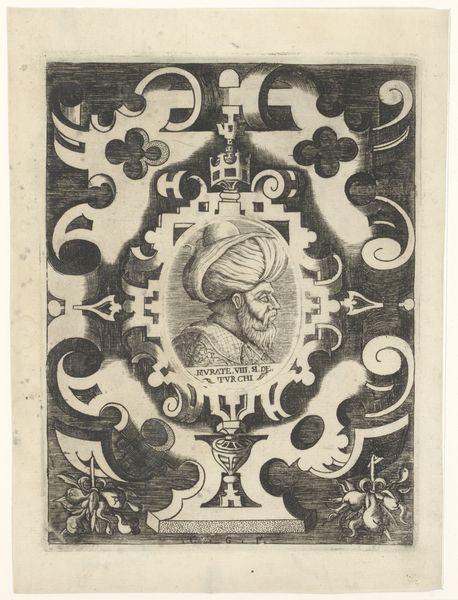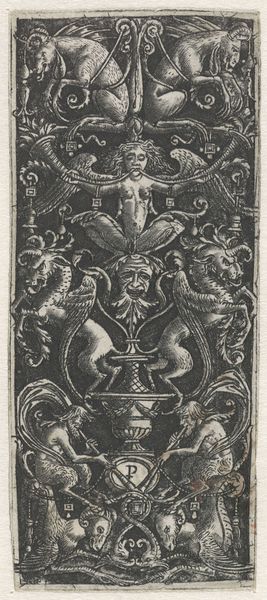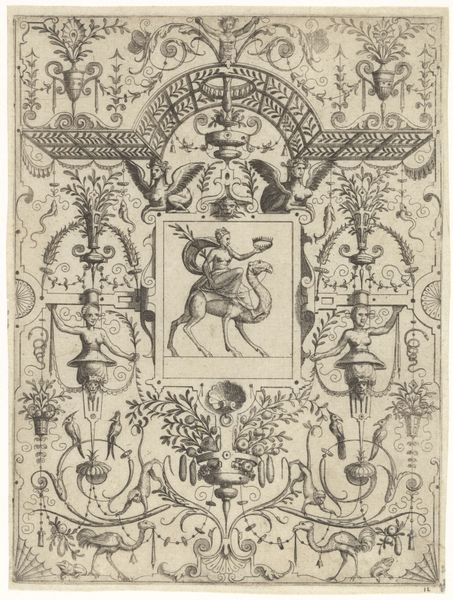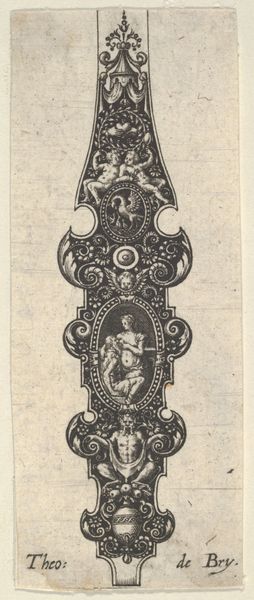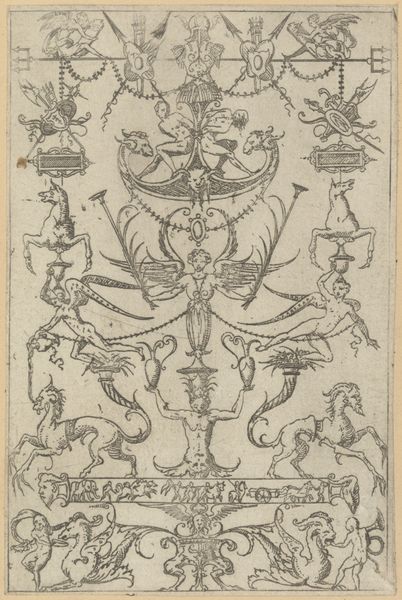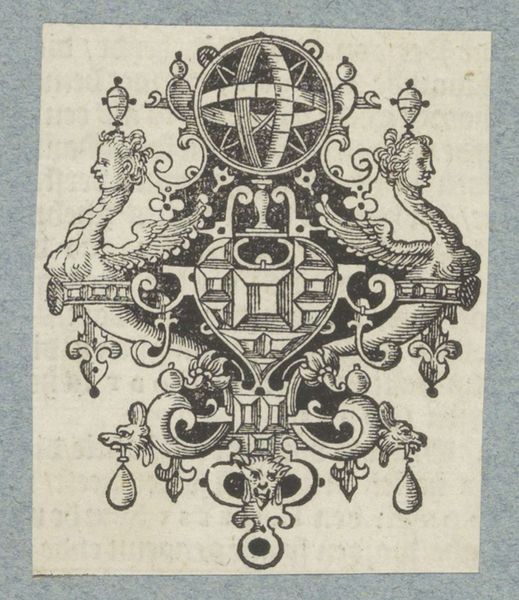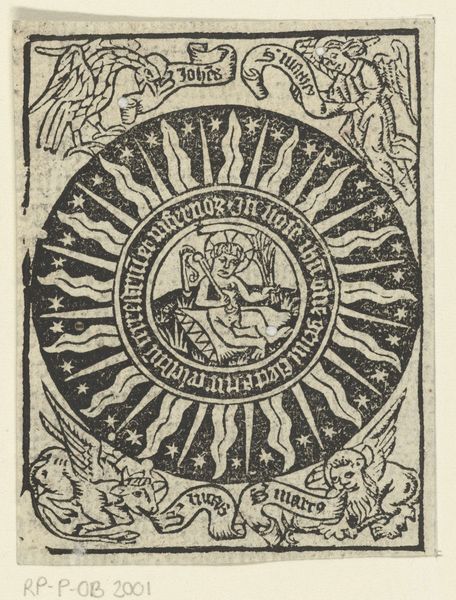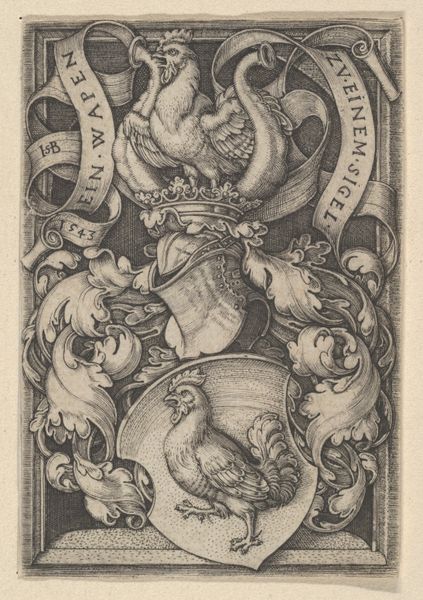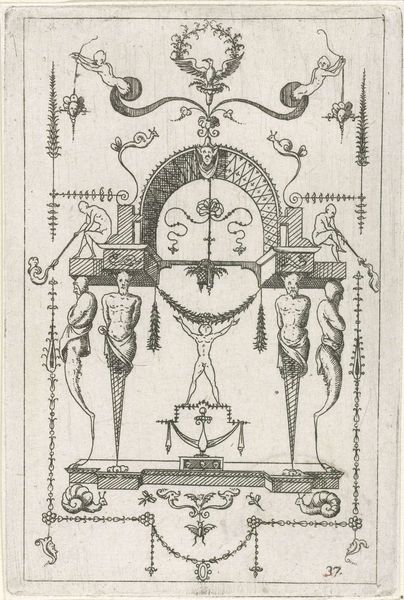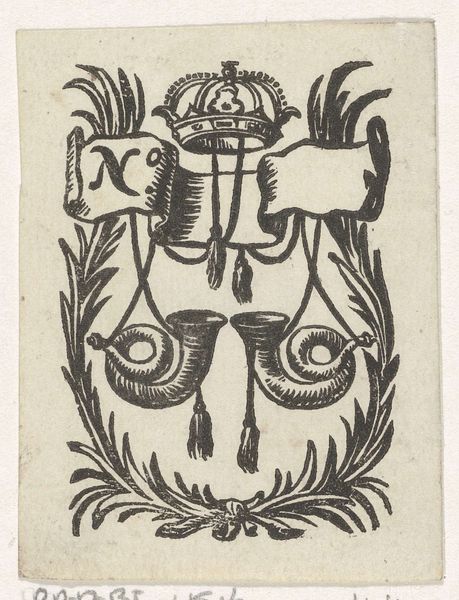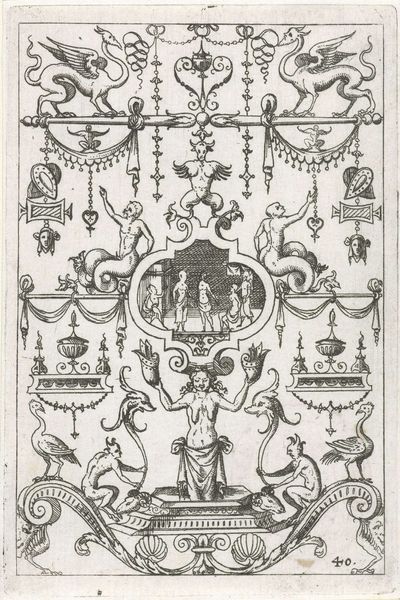
Ornament met kandelaber met gevleugelde vrouw die draperie ophoudt boven wapentrofee met schild in midden 1500 - 1520
0:00
0:00
ornament, print, engraving
#
ornament
#
allegory
# print
#
figuration
#
11_renaissance
#
engraving
Dimensions: height 84 mm, width 24 mm
Copyright: Rijks Museum: Open Domain
Curator: I find this engraving quite striking! Peregrino da Cesena created "Ornament met kandelaber met gevleugelde vrouw die draperie ophoudt boven wapentrofee met schild in midden" between 1500 and 1520. It’s a relatively small print, but it contains a wealth of imagery. What’s your immediate impression? Editor: Darkly ornamental! The tight composition amplifies a sense of density and weight, with a touch of the grotesque about it. There is an ambiguous narrative about power here, one that is quite mesmerizing. Curator: Absolutely. The allegorical nature of Renaissance ornament allowed for precisely that kind of complex statement. It’s less about obvious narratives and more about layering meaning for those in the know. Prints like this were part of a visual culture that was about conveying a whole philosophy in a tiny space. Editor: I'm captivated by the central winged woman. She's both powerful and vulnerable, supporting the drapery above a military trophy. It's like she’s caught in the gears of the whole apparatus. Who was the intended audience, and what message do you think Peregrino was trying to send? Curator: Given the print's size and detail, I suspect it was aimed at other artists, artisans, and perhaps wealthy collectors—individuals who appreciated the intricacies of design. It’s a masterclass in controlled execution. The message is subtle; the wings can represent spiritual and intellectual elevation and freedom, which in tandem with symbols of might implies enlightened leadership or virtuous authority. Editor: But doesn't the rigid symmetry also hint at something authoritarian? Everything is so precisely balanced, with very little in the way of open space. Curator: That's an insightful point! The symmetry certainly evokes order and control, fitting into a broader context of how rulers sought to project power through art and architecture. There is tension between the organic and inorganic here, the lively winged female and all the hard armor of power. The winged boys at the bottom add a touch of, dare I say, unsettling whimsy. Editor: They look oddly joyless! This ornament speaks volumes about the Renaissance’s intertwined relationship between art, power, and allegory. It’s a potent little thing. Curator: It really is. Da Cesena gives us an engraving that transcends mere decoration and challenges us to unravel its many layers.
Comments
No comments
Be the first to comment and join the conversation on the ultimate creative platform.
